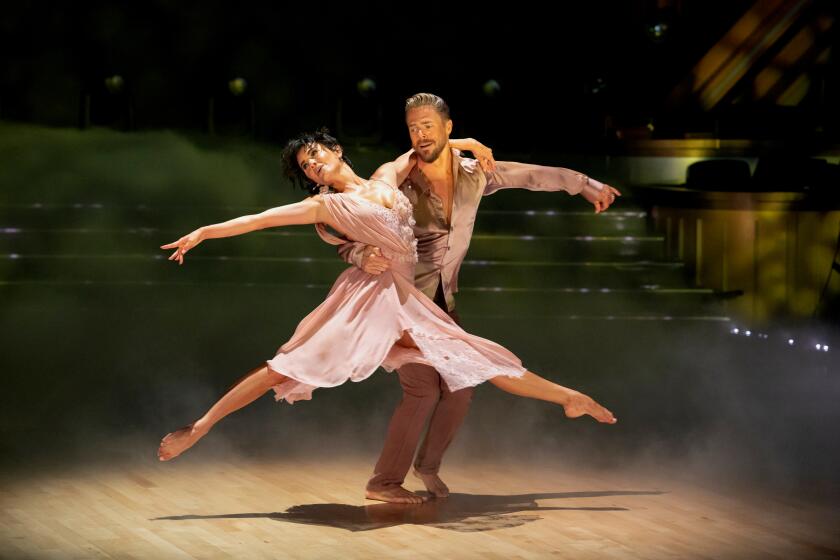Faganâs Shapes Evoke a Creative World
Through invention and sampling, choreographer Garth Fagan 30 years ago began creating his own movement vocabulary. It was a language he could apply equally to abstract, dramatic or funky works, as a five-part program of his dances showed Wednesday at the Irvine Barclay Theatre.
But lately, as the program also showed, he has turned toward exploring a different plasticity of shape. It has opened a whole new imaginative world of communication for him and, additionally, won him the 1998 Tony Award for best choreography for the Broadway hit âThe Lion King.â
Last things first.
Created in 1999, âWozaâ (a Zulu word for âcomeâ) depicts Eden, an earthly hell and paradise regained. But it does so obliquely, through evocative shapes. It doesnât tell a âstory.â
Take the most apparently didactic section, for instance: âCome . . . Forced Voyage.â Five earthbound couples lying on the floor, each interlaced and tightly compacted in a kind of clothespin shape, begin to rock slightly to each side. Soon the women scoop their outstretched arms forward and upward. They look like figureheads on the bows of sailing ships, but the image isnât forced or literal.
Moments later, the couples roll into standing figures, their arms curved outward. Each couple suddenly flinches, as if whipped. But the movement is not hyper-dramatized.
Minimum means create maximum effect. Without the section title suggesting the slave-ship passage, the images would still register powerfully but not necessarily with this particularity.
Similarly, it is through shape invention, not storytelling, that Sharon Skepple in the opening solo (âCome . . . Preparedâ) and Norwood Pennewell and Natalie Rogers in their ensuing duet (âCome . . . Foreverâ) seem to transcend limits of human movement--Skepple in head-to-knee jackknife extensions; the couple in gorgeous entwinement--thereby evoking a state of wondrous Edenic freedom and possibility.
The final section (âCome . . . Celebrationâ) amplifies this state by extending freedom of movement to the whole company and thus the whole community. The work is set to the evocative score by Lebo M, the South African composer of âLion King.â
Very little of this was prefigured in âPrelude: Discipline Is Freedom,â which opened the program and which laid down the basics of the Fagan vocabulary up to this point. Created in 1981 and revised two years later, this abstract showpiece melds movement derived from ballet, jazz, modern and Afro-Caribbean dance.
The vocabulary surfaced as Chris Morrison and Skepple danced âSonata and the Afternoon,â a serious but strangely unresolved exploration of mutual need and support, to Brahms.
âTouring Jubilee 1924 (Professional),â on the other hand, uses familiar Fagan movements and music by the Preservation Hall Jazz Band to evoke a joyous funky dance hall.
âTwo Pieces of One: Greenâ alternated jazz music by Tony Williams and 16th century vocal music by Cristobal de Morales to create sometimes haunting stage images, but ultimately, unfortunately, in an structurally amorphous, puzzling and teasing way (with its many false endings).
âWozaâ opened a new world and proved the hit of the evening.
*
Garth Fagan Dance will repeat âPreludeâ and âWozaâ on a program that includes other works on Saturday, 8 p.m., Luckman Fine Arts Complex, Cal State Los Angeles, 5151 State University Drive, L.A. $35-$40. (323) 343-6600.
More to Read
The biggest entertainment stories
Get our big stories about Hollywood, film, television, music, arts, culture and more right in your inbox as soon as they publish.
You may occasionally receive promotional content from the Los Angeles Times.










